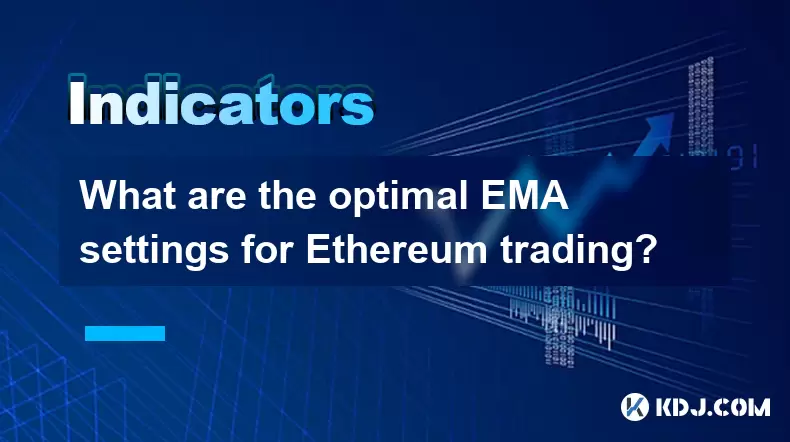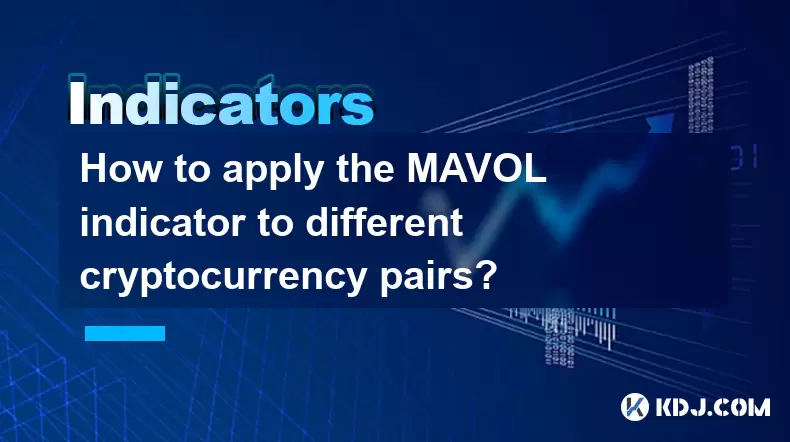-
 Bitcoin
Bitcoin $118400
0.47% -
 Ethereum
Ethereum $3836
2.20% -
 XRP
XRP $3.157
2.98% -
 Tether USDt
Tether USDt $0.9999
-0.03% -
 BNB
BNB $801.5
1.31% -
 Solana
Solana $180.9
2.07% -
 USDC
USDC $0.9999
-0.02% -
 Dogecoin
Dogecoin $0.2225
2.50% -
 TRON
TRON $0.3285
-1.02% -
 Cardano
Cardano $0.7789
2.60% -
 Hyperliquid
Hyperliquid $43.60
2.39% -
 Sui
Sui $3.892
4.41% -
 Stellar
Stellar $0.4229
3.34% -
 Chainlink
Chainlink $18.01
3.98% -
 Hedera
Hedera $0.2745
6.77% -
 Bitcoin Cash
Bitcoin Cash $582.3
3.38% -
 Avalanche
Avalanche $23.77
1.04% -
 Ethena USDe
Ethena USDe $1.001
0.01% -
 Toncoin
Toncoin $3.493
3.59% -
 Litecoin
Litecoin $110.0
2.48% -
 UNUS SED LEO
UNUS SED LEO $8.936
-0.37% -
 Shiba Inu
Shiba Inu $0.00001304
2.49% -
 Uniswap
Uniswap $9.999
1.09% -
 Polkadot
Polkadot $3.897
3.26% -
 Monero
Monero $308.6
-0.83% -
 Dai
Dai $0.9999
-0.01% -
 Bitget Token
Bitget Token $4.504
-0.04% -
 Pepe
Pepe $0.00001154
2.95% -
 Cronos
Cronos $0.1471
3.06% -
 Ethena
Ethena $0.6691
19.53%
What are the optimal EMA settings for Ethereum trading?
The Exponential Moving Average (EMA) helps Ethereum traders identify trends and reversals by prioritizing recent price data, making it ideal for volatile markets.
Jul 31, 2025 at 06:14 am

Understanding EMA in Ethereum Trading
The Exponential Moving Average (EMA) is a widely used technical indicator in cryptocurrency trading, particularly for assets like Ethereum (ETH). Unlike the Simple Moving Average (SMA), which assigns equal weight to all data points, the EMA gives more importance to recent price movements. This responsiveness makes EMA especially valuable in the volatile Ethereum market. Traders use EMA to identify trends, potential reversals, and entry or exit points. The core idea is that by focusing on recent prices, EMA reacts faster to new information, allowing traders to stay ahead of momentum shifts. When applied to Ethereum, the EMA helps filter out market noise and provides clearer signals during rapid price fluctuations.
Common EMA Combinations for Ethereum
Several EMA combinations are popular among Ethereum traders due to their effectiveness in different market conditions. One widely adopted setup is the 9-period and 21-period EMA. The 9 EMA acts as a short-term trend tracker, while the 21 EMA serves as a medium-term reference. When the 9 EMA crosses above the 21 EMA, it generates a bullish signal, often interpreted as a buy opportunity. Conversely, a cross below indicates a bearish signal. Another frequently used pair is the 50-period and 200-period EMA, known as the "Golden Cross" and "Death Cross" setup. A Golden Cross occurs when the 50 EMA moves above the 200 EMA, suggesting a long-term uptrend. The Death Cross, where the 50 EMA falls below the 200 EMA, may indicate a prolonged downtrend. These combinations are especially useful for swing and position traders focusing on Ethereum’s broader market direction.
Optimal EMA Settings Based on Timeframes
The ideal EMA settings depend heavily on the trader’s chosen timeframe. For day traders analyzing 5-minute or 15-minute charts, shorter EMAs such as 12 and 26 periods are optimal. These settings react quickly to price changes, enabling timely entries and exits. To enhance accuracy, traders often combine these with the MACD indicator, which itself is based on EMA calculations (12 EMA and 26 EMA). For 4-hour or daily charts, the 20 and 50 EMA combination offers a balanced view of short-to-medium term trends. This setup reduces false signals while still capturing meaningful price movements. On weekly charts, long-term investors may prefer the 50 and 200 EMA to identify macro trends in Ethereum’s price. Each timeframe demands a tailored EMA configuration to align with the trader’s strategy and risk tolerance.
How to Set Up EMA on Trading Platforms
Setting up EMA on popular trading platforms like TradingView, Binance, or MetaTrader is straightforward. Follow these steps to apply EMA to Ethereum charts:
- Open the chart for ETH/USDT or ETH/USD on your preferred platform
- Locate the "Indicators" or "Studies" button, usually at the top of the chart interface
- Search for "Exponential Moving Average" in the indicator library
- Click to add it to the chart
- Adjust the period value to your desired setting (e.g., 9, 21, 50)
- Repeat the process to add a second EMA with a different period
- Customize the color and line thickness for visual clarity (e.g., green for 9 EMA, red for 21 EMA)
- Save the template for future use
On Binance, after opening the ETH chart, click "Indicators" → "Moving Averages" → "EMA", then input the period. Multiple EMAs can be layered to create crossover systems. Ensuring correct settings is critical—misconfigured EMAs can lead to misleading signals.
Using EMA Crossovers for Entry and Exit Signals
EMA crossovers are among the most reliable tools for timing Ethereum trades. A bullish crossover occurs when a short-term EMA rises above a long-term EMA, suggesting upward momentum. For example, when the 12 EMA crosses above the 26 EMA on a 1-hour chart, it may signal a good entry point for a long position. Traders often wait for the crossover to be confirmed by volume or candlestick patterns to avoid false breakouts. A bearish crossover happens when the short-term EMA drops below the long-term EMA, indicating potential downward pressure. This could prompt traders to close long positions or initiate short trades. Some traders use a third EMA, such as a 100-period, as a dynamic support or resistance level. Price holding above the 100 EMA may confirm trend strength, while a break below could signal weakening momentum.
Combining EMA with Other Indicators for Better Accuracy
Relying solely on EMA can result in false signals, especially during sideways or choppy markets. Combining EMA with other indicators improves signal reliability. The Relative Strength Index (RSI) helps identify overbought or oversold conditions. If the 9 EMA crosses above the 21 EMA and RSI is below 30, it strengthens the bullish case. Conversely, a bearish crossover with RSI above 70 adds conviction. The MACD is inherently based on EMA and provides additional confirmation—when MACD line crosses above the signal line and both are above zero, it aligns with bullish EMA crossovers. Volume indicators are also useful; increasing volume during a crossover validates the move. For Ethereum, which often experiences pump-and-dump cycles, using EMA alongside Bollinger Bands can help assess volatility and breakout potential. When price touches the upper band and EMA shows upward alignment, it may indicate a sustained rally.
Frequently Asked Questions
Q: Can I use the same EMA settings for Ethereum and Bitcoin?
While some settings like 50 and 200 EMA work for both, Ethereum tends to be more volatile than Bitcoin. Therefore, shorter EMAs such as 9 and 21 may be more responsive for ETH. Traders often fine-tune EMA periods based on each asset’s volatility and average trading volume.
Q: How do I know if an EMA crossover is a false signal?
A crossover occurring in a sideways market with low volume is more likely to be false. Confirm with price action—look for strong candle closes beyond the crossover point. If the price quickly reverses, it may be a fakeout. Using RSI or MACD can help filter out weak signals.
Q: Should I use EMA on candlestick or line charts for Ethereum?
Candlestick charts are preferred because they provide more context—such as wicks and body size—that help confirm EMA signals. A bullish crossover with a large green candle adds more weight than one on a line chart, which only shows closing prices.
Q: Is the 200 EMA more important for Ethereum than shorter EMAs?
The 200 EMA is a key long-term trend indicator and often acts as dynamic support or resistance. However, shorter EMAs like 9 or 12 are more useful for timing entries in active trading. The importance depends on the trading style—long-term holders prioritize the 200 EMA, while day traders focus on faster EMAs.
Disclaimer:info@kdj.com
The information provided is not trading advice. kdj.com does not assume any responsibility for any investments made based on the information provided in this article. Cryptocurrencies are highly volatile and it is highly recommended that you invest with caution after thorough research!
If you believe that the content used on this website infringes your copyright, please contact us immediately (info@kdj.com) and we will delete it promptly.
- SEC, Crypto, and On-Chain: Navigating the Regulatory Maze
- 2025-08-01 02:31:40
- Bitcoin Bullish Market: How Long Positions are Boosting the Crypto King
- 2025-08-01 02:35:33
- Visa, Stellar, and Stablecoins: A New York Minute on the Future of Finance
- 2025-08-01 01:50:50
- BCH, FET, BlockDAG: Decoding the Crypto Buzz
- 2025-08-01 01:16:37
- Conflux Token, Crypto Simplicity, and WeWake Finance: A New Era?
- 2025-08-01 01:50:50
- Dogecoin, Remittix, and Analyst Targets: Navigating the Crypto Landscape
- 2025-08-01 01:55:40
Related knowledge

What does it signify when the MACD crosses below the zero line?
Aug 01,2025 at 01:43am
Understanding the MACD IndicatorThe Moving Average Convergence Divergence (MACD) is one of the most widely used technical analysis tools in the crypto...

How does the MACD histogram show momentum?
Aug 01,2025 at 01:16am
Understanding the MACD Histogram and Its Role in Cryptocurrency TradingThe MACD histogram is a visual representation of the difference between the MAC...

What is a MACD crossover?
Jul 31,2025 at 11:52pm
Understanding the Role of Private Keys in Cryptocurrency SecurityIn the world of cryptocurrency, private keys are the cornerstone of ownership and con...

How can you use the MACD histogram to determine trend strength?
Jul 31,2025 at 11:10pm
Understanding the MACD Histogram and Its ComponentsThe MACD (Moving Average Convergence Divergence) histogram is a visual representation of the differ...

What is the impact of different moving average types (SMA vs. EMA) on the MAVOL indicator?
Aug 01,2025 at 02:31am
Understanding the MAVOL Indicator in Cryptocurrency AnalysisThe MAVOL (Moving Average Volume) indicator is a technical analysis tool used in the crypt...

How to apply the MAVOL indicator to different cryptocurrency pairs?
Aug 01,2025 at 12:43am
Understanding the MAVOL Indicator in Cryptocurrency TradingThe MAVOL indicator, short for Moving Average Volume, is a technical analysis tool that app...

What does it signify when the MACD crosses below the zero line?
Aug 01,2025 at 01:43am
Understanding the MACD IndicatorThe Moving Average Convergence Divergence (MACD) is one of the most widely used technical analysis tools in the crypto...

How does the MACD histogram show momentum?
Aug 01,2025 at 01:16am
Understanding the MACD Histogram and Its Role in Cryptocurrency TradingThe MACD histogram is a visual representation of the difference between the MAC...

What is a MACD crossover?
Jul 31,2025 at 11:52pm
Understanding the Role of Private Keys in Cryptocurrency SecurityIn the world of cryptocurrency, private keys are the cornerstone of ownership and con...

How can you use the MACD histogram to determine trend strength?
Jul 31,2025 at 11:10pm
Understanding the MACD Histogram and Its ComponentsThe MACD (Moving Average Convergence Divergence) histogram is a visual representation of the differ...

What is the impact of different moving average types (SMA vs. EMA) on the MAVOL indicator?
Aug 01,2025 at 02:31am
Understanding the MAVOL Indicator in Cryptocurrency AnalysisThe MAVOL (Moving Average Volume) indicator is a technical analysis tool used in the crypt...

How to apply the MAVOL indicator to different cryptocurrency pairs?
Aug 01,2025 at 12:43am
Understanding the MAVOL Indicator in Cryptocurrency TradingThe MAVOL indicator, short for Moving Average Volume, is a technical analysis tool that app...
See all articles

























































































